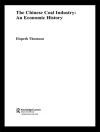Serpulid polychaetes are a unique and highly specialised group of marine segmented worms that have adapted to inhabiting self-secreted calcareous tubes attached to a wide range of hard substrates. These animals are found across all depths and habitats of the world’s oceans, and some form mutually beneficial associations with live corals. The genus Hydroides is of special concern and importance, as it is not only the largest, but also one of the most ecologically and economically important groups of marine invertebrates because it includes notorious biofoulers and common bioinvaders that travel around the world hitchhiking on ships’ hulls.
This is the first fully illustrated guide to this notorious serpulid genus of calcareous tubeworms, providing a comprehensive diagnostic treatment of all known species of the genus Hydroides. This important reference provides reliable identification tools to distinguish Australian tubeworms from potential alien invaders that constantly arrive from overseas and threaten Australia’s maritime transport, trade and mariculture.
Inhoudsopgave
Acknowledgements
1: Introduction
2: Tubes
3: History of studies
4: Reproduction, development and life history
5: Ontogeny: reversible asymmetry, compensatory regeneration and duplicity
6: Economic and ecological impacts
7: Barcoding, phylogeny and genome structure
8: Biogeography
9: Methods of collecting, examination, preservation and identification
10: Diagnostic characters used for identification
11: Key to the species of
Hydroides worldwide
12: Taxonomic account
Abbreviations of institutions where type material is deposited
Glossary
References
Index
Over de auteur
Dr Harry A. ten Hove is an Honorary Research Scientist at Naturalis Biodiversity Center in Leiden, the Netherlands. He received his Ph D in 1975 from the University of Utrecht, the Netherlands, and previously worked at the Universities of Utrecht and Amsterdam.












